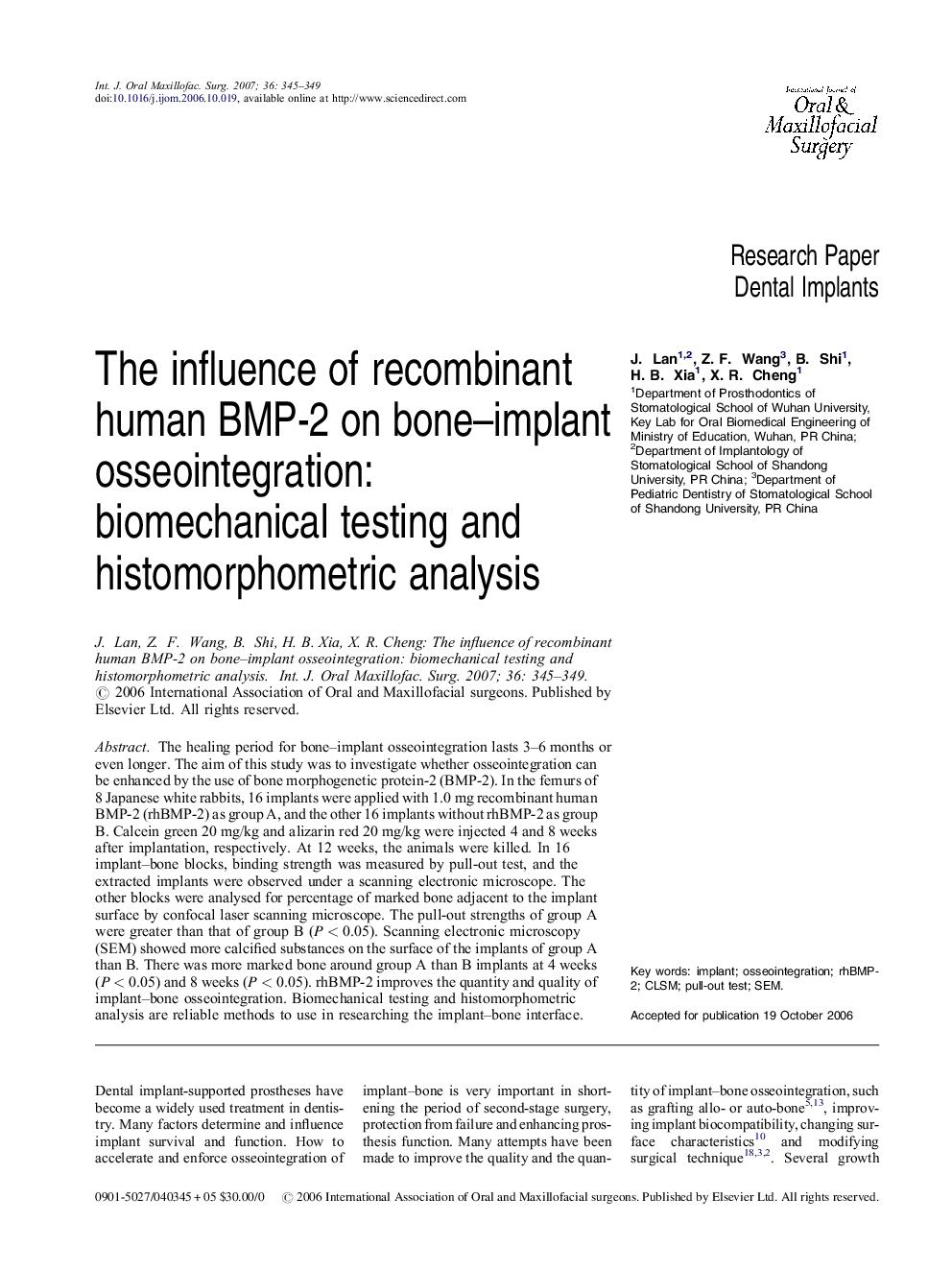| Article ID | Journal | Published Year | Pages | File Type |
|---|---|---|---|---|
| 3134818 | International Journal of Oral and Maxillofacial Surgery | 2007 | 5 Pages |
The healing period for bone–implant osseointegration lasts 3–6 months or even longer. The aim of this study was to investigate whether osseointegration can be enhanced by the use of bone morphogenetic protein-2 (BMP-2). In the femurs of 8 Japanese white rabbits, 16 implants were applied with 1.0 mg recombinant human BMP-2 (rhBMP-2) as group A, and the other 16 implants without rhBMP-2 as group B. Calcein green 20 mg/kg and alizarin red 20 mg/kg were injected 4 and 8 weeks after implantation, respectively. At 12 weeks, the animals were killed. In 16 implant–bone blocks, binding strength was measured by pull-out test, and the extracted implants were observed under a scanning electronic microscope. The other blocks were analysed for percentage of marked bone adjacent to the implant surface by confocal laser scanning microscope. The pull-out strengths of group A were greater than that of group B (P < 0.05). Scanning electronic microscopy (SEM) showed more calcified substances on the surface of the implants of group A than B. There was more marked bone around group A than B implants at 4 weeks (P < 0.05) and 8 weeks (P < 0.05). rhBMP-2 improves the quantity and quality of implant–bone osseointegration. Biomechanical testing and histomorphometric analysis are reliable methods to use in researching the implant–bone interface.
